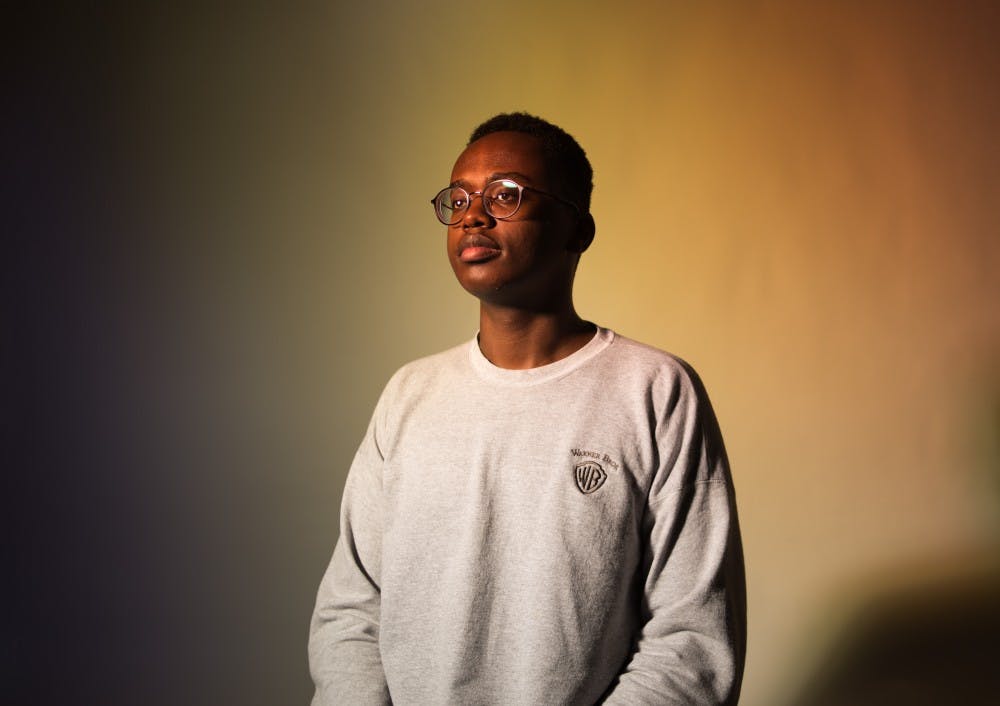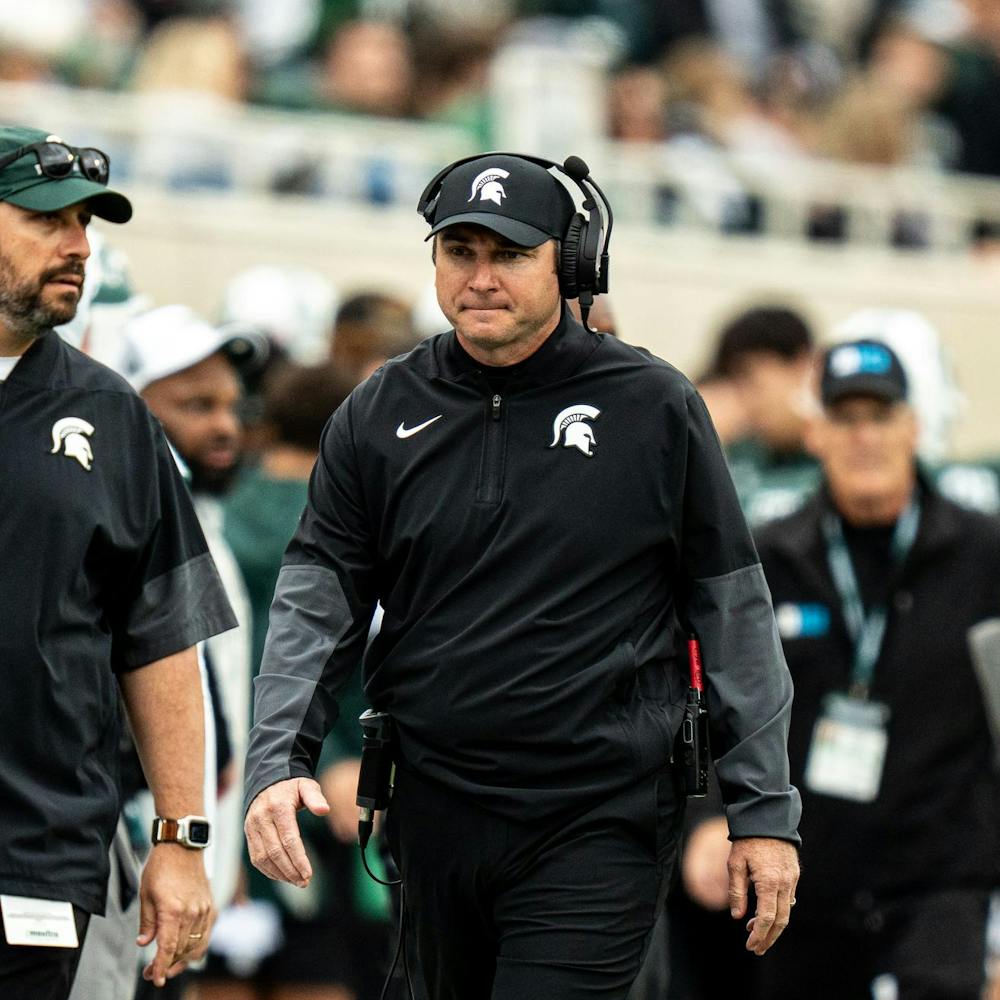Racism, body shaming, fetishization and sexualization — these issues plague the gay community worldwide. At Michigan State, the gay community is not immune to these problems.
Gay men of color traverse the dating pool with added complications. Additionally, gay men (and men who are attracted to men, but don’t identify as gay) who don’t fit into boxes like “twink” or “hunk” also face issues when trying to find their place in the community. Social relations and policy sophomore Baraka Macharia has tried finding his place.
“I don’t really feel like I’m a part of the gay community,” Macharia said.
Stereotypes impact just about every minority community, and gay men are often caricatured by Hollywood and media at large. In the past — and in the present — media portrayals of people of color often stem from discrimination. Black or Latino men are often seen as “thugs” and East Asian men are considered softer or de-sexualized.
For gay characters in media, white gay men tend to be slightly better represented, but when straight writers and actors collaborate on these characters, they still often resort to over-exaggerations and cliches. Gay men are typically characterized as overly masculine — “straight-passing” — or overly feminine.
With characters like Kurt from Glee, Cam from Modern Family, just about all of his gay friends and Jack from Will & Grace — each of these characters perpetuates the over-the-top, catty trope that is commonly associated with gay men.
With straight-passing characters, they might be overly masculine, in the closet, or self-hating — think Sean Dougan from the L.A. Complex or Micky from Shameless.
Macharia feels that this stereotyping, especially racial stereotyping, is specifically a problem at MSU. Having dealt with issues of fetishization, especially online, he’s unsure of where he stands with the gay community on campus.
“It’s either people fetishize me on the apps or it’s blatant racism or no responses,” said Macharia. “Then it makes me think if it’s because I’m black there are no responses.”
Issues of racism are a societal problem and, unsurprisingly, the gay community contributes to that problem. Racial “preferences” are often touted on dating/hookup apps like Tinder and Grindr. Versions of phrases such as “no Blacks, fats, or fems” and “no spice, no rice” are not uncommon to see across gay dating platforms. Other issues of racism are less obvious — black men are fetishized in the gay community, though it can be hard to pick up on at times.
“I feel like most of the gay community at MSU is white,” Macharia said. “Interacting with them, they’re not welcoming to outside voices or outside opinions.”
The issues that Macharia deals with are not uncommon. Both inside and outside of MSU, the gay community has ways of pushing a narrative that favors white men. In terms of racial fetishization, men of color are not exempt from contributing to the problem.
“It gets problematic when you put one race over another, like on a pedestal,” Macharia said. “My friends talk about this a lot, like how Tyler, the Creator is bisexual and he has this thing for white boys — in his lyrics he puts them on a pedestal.”
Macharia references lines like: “Never let a n---- tell me I couldn’t stunt/ Pro-black but this twink white” in his song “Crust in Their Eyes.”
Clayton Griffith, a bisexual student at MSU, also explained his experience in dating over the past few years, both at MSU and elsewhere.
Growing up in a predominantly black neighborhood, his experiences with the gay community differed from what he sees on campus.
“There wasn’t really dating men,” Griffith said. “There were hidden sexual encounters with men because the whole idea of being black and gay was not a thing, especially in the hood. ... It was under-the-covers-type things, you know, ‘DL’, and other times it’s with these very highly masculine guys — football players, rappers, (people) like that ... So, the idea was to be the least feminine, because they didn’t want it to be a “gay” thing.”
Once Griffith began attending MSU, his experiences with the gay community were significantly different, though dealing with toxic masculinity and hyper-sexualization were still a significant problem. He said when men would approach him — often times older men — they would only approach him to act upon some kind of fetish.
“The idea that as a black man you’re going to be more aggressive, more masculine, more assertive … (It’s) not always the reality,” Griffith said. “It’s not just the community that’s fueling it, it’s media that’s fueling it.”
On the opposite side, Griffith’s bisexuality has been a sticking point when he’s dating — his sexuality is made to seem as if he is greedy or gets around too much, or would leave a partner quickly.
Support student media!
Please consider donating to The State News and help fund the future of journalism.
“I think a lot of people have insecurities when it comes to sex and sexuality,” Griffith said. “They let those insecurities negatively affect their relationships with other people.”
While race-based issues are significant in the gay community, it is not the only problem. Fat shaming and body shaming have also taken root.
Issues such as body shaming again come from the narratives that are projected through society’s ideal look — with skinny or fit people being featured on television, ads, magazines. Seeing that as the ideal often leads to insecurities.
“A lot of white gays especially have this notion that since we are a minority or marginalized group, that we don’t have the same issues as the rest of society,” political science sophomore Mitchell Page said. “In a lot of ways we have them to an even (greater) extent.”
In terms of body shaming, political science sophomore Carter Oselett explained his experiences with shaming have become more internal because of the way that people present themselves to be desirable.
“I feel like on these dating apps, it’s always like a shirtless picture that you have to have or something like that,” he said.
Oselett’s experiences with sexualization have come in different forms but one that sticks with him is how his mom talks to him about being safe.
“My mom always asked my straight brother if he’s getting his girlfriend pregnant,” he said. “She’s asking me if I’m getting tested.”
He said that he doesn’t think it comes from a negative outlook at his sexuality, but the juxtaposition between the two questions is evident.
Sexualization is at the heart of all these issues. The gay community is made out to be a community obsessed with sex, but is the so-called obsession merely a part of the stereotype or a byproduct of society’s attributions to gay men?
“We never got to experience the sexual and romantic relationship development that our straight counterparts did — they did that (in) middle school and high school,” Page said. “In a lot of ways, we’re still grappling to figure that out.”
This story was part of a two-part centerpiece by The State News. Read the other piece by Karly Graham here.
Discussion
Share and discuss “Dealing with stereotypes in gay communities” on social media.







